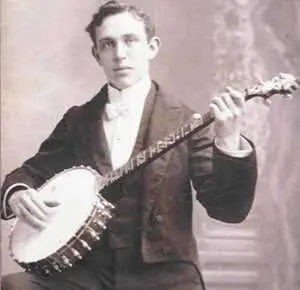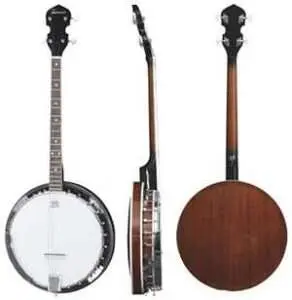
Banjo history
Banjo – a stringed musical instrument with a body in the form of a drum or a tambourine and a neck on which 4-9 strings are stretched. Outwardly, it is somewhat similar to a mandolin, but radically different in sound: the banjo has a richer and sharper sound. It is not difficult to master it, especially if you have basic guitar playing skills.
 There is a misconception that the banjo was first learned in 1784 from Thomas Jefferson, a prominent American figure of those times. Yes, he did mention a certain musical instrument bonjar, which consisted of dried gourd, mutton sinews as strings and a fret board. In fact, the first description of the instrument was given in 1687 by Hans Sloan, an English naturist doctor who, traveling through Jamaica, saw it in African slaves. African-Americans created their hot music to the shaking rhythms of the strings, and the sound of the banjo fit perfectly into the rough rhythms of black performers.
There is a misconception that the banjo was first learned in 1784 from Thomas Jefferson, a prominent American figure of those times. Yes, he did mention a certain musical instrument bonjar, which consisted of dried gourd, mutton sinews as strings and a fret board. In fact, the first description of the instrument was given in 1687 by Hans Sloan, an English naturist doctor who, traveling through Jamaica, saw it in African slaves. African-Americans created their hot music to the shaking rhythms of the strings, and the sound of the banjo fit perfectly into the rough rhythms of black performers.
The banjo entered American culture in the 1840s with the help of the minstrel show. The minstrel show was a theatrical performance with the participation of 6-12 people.  Such performances with dances and funny scenes to the harmonious rhythms of the banjo and violins could not leave the American public indifferent. Spectators came to see not only satirical sketches, but also to listen to the sonorous sound of the “string king”. Soon African Americans lost interest in the banjo, replacing it with the guitar. This was due to the fact that in comedy productions they were portrayed as loafers and ragamuffins, and black women as depraved harlots, which, of course, could not please black Americans. Quite quickly, minstrel shows became the lot of white people.
Such performances with dances and funny scenes to the harmonious rhythms of the banjo and violins could not leave the American public indifferent. Spectators came to see not only satirical sketches, but also to listen to the sonorous sound of the “string king”. Soon African Americans lost interest in the banjo, replacing it with the guitar. This was due to the fact that in comedy productions they were portrayed as loafers and ragamuffins, and black women as depraved harlots, which, of course, could not please black Americans. Quite quickly, minstrel shows became the lot of white people.  The famous white banjo player Joel Walker Sweeney significantly improved the design of the instrument – he replaced the pumpkin body with a drum body, leaving only 5 strings, delimiting the neck with frets.
The famous white banjo player Joel Walker Sweeney significantly improved the design of the instrument – he replaced the pumpkin body with a drum body, leaving only 5 strings, delimiting the neck with frets.
In the 1890s, the era of new styles began – ragtime, jazz and blues. Drums alone did not provide the necessary level of rhythmic pulsation. with which the four-string tenor banjo helped with success. With the advent of electronic musical instruments with a more pronounced sound, interest in the banjo began to wane. The instrument has practically disappeared from jazz, having migrated to the new country music style.





